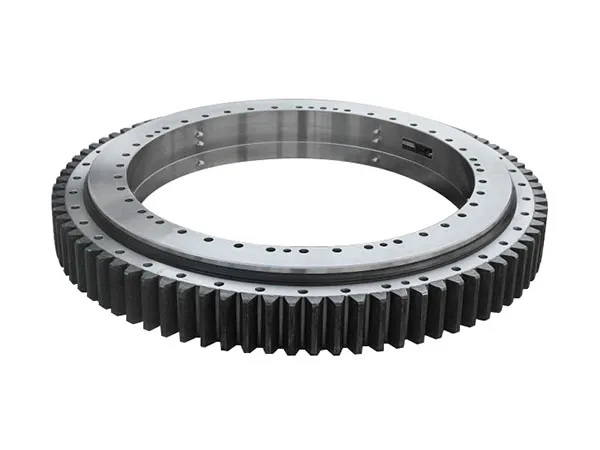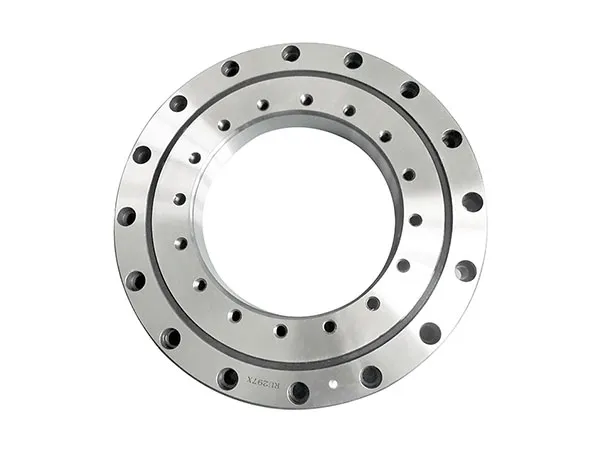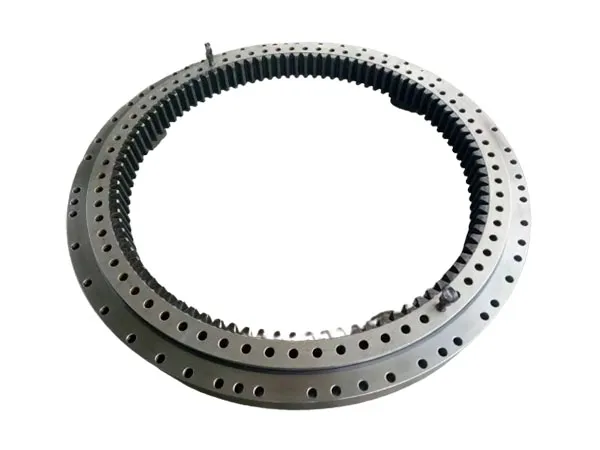- +86 13837949030 +86 15890619536
- info@lymcbearings.com export@lymcbearings.com
- Luoxin Industrial Cluster, Luoyang City,Henan Province,China
Time:2025-05-28 01:40:21 Source:LYMC Slewing Bearing
Choosing the right slewing bearing is crucial for the efficient and safe operation of machinery. It involves a detailed analysis of the application's requirements and the operating environment.

Slewing bearings are designed to handle complex load combinations. You need to accurately determine all the loads acting on the bearing:
Axial Load (Fa): The vertical force acting along the axis of rotation.
Radial Load (Fr): The horizontal force acting perpendicular to the axis of rotation.
Tilting Moment (M): The force that tries to tip the bearing over. This is often the determining factor for slewing ring selection. It's a product of a force and its distance from the bearing's axis of rotation.
It's essential to consider both static (at rest) and dynamic (during operation, including impact and shock loads) maximum loads. Manufacturers often provide "static limiting load diagrams" to help estimate the required bearing size based on axial load and tilting moment.
Different slewing bearing types are suited for various load capacities and performance characteristics:
Four-Point Contact Ball Slewing Bearings:
Characteristics: Compact structure, light weight, four-point contact between balls and raceway. Can bear axial, radial, and tilting moment loads simultaneously. Good for low to medium speeds.
Applications: Small to medium-sized cranes, excavators, welding operators, slew conveyors.
Crossed Cylindrical Roller Slewing Bearings:
Characteristics: Rollers arranged in a 1:1 cross pattern. Offer high manufacturing precision, compact structure, and high rigidity. Can withstand axial, large radial, and tilting moment loads simultaneously.
Applications: Robotics, machine tools, medical equipment, heavy machinery like large cranes and excavators where high accuracy and rigidity are paramount. Generally limited to lower continuous slewing speeds compared to ball bearings.
Double-Row Ball Slewing Bearings:
Characteristics: Three races with two rows of steel balls (often different diameters). Good for large axial forces and tilting moments.
Applications: Tower cranes, truck cranes, and other loading/unloading machinery requiring medium to large diameters.
Three-Row Roller Slewing Bearings:
Characteristics: Three separate raceways for upper, lower, and radial rollers. Can accurately determine the load on each row. Offer the largest bearing capacity among standard types, with firm structure and large shaft/radial dimensions.
Applications: Heavy machinery requiring large diameters, such as bucket wheel excavators, marine cranes, ladle slewing equipment, and large tonnage truck cranes.
Speed Requirements: Determine the maximum operating speed. Four-point contact ball slewing bearings generally have higher speed capabilities and lower friction than crossed cylindrical roller bearings.
Friction and Efficiency: Lower friction leads to less heat generation and more efficient rotation.
Accuracy: For applications requiring precise positioning (e.g., robotics), select bearings with minimal clearance and high manufacturing precision.

Temperature Range: Standard bearings typically operate between -30°C and 120°C. Extreme temperatures (very high or low) may require special materials, lubricants, and sealing.
Corrosion Resistance: In harsh environments (e.g., marine, chemical), consider stainless steel or specially coated bearings to prevent corrosion.
Dust and Contaminant Resistance: Ensure the bearing has appropriate sealing (e.g., double sealed) to protect against dust, dirt, moisture, and other contaminants that can reduce lifespan.
Vibration: For applications with significant vibration, preloaded four-point contact ball slewing bearings or crossed cylindrical roller bearings are typically suitable.
Inner and Outer Diameter: Choose based on available space in your machinery.
Height/Width: Ensure the bearing's dimensions fit within design constraints.
Mounting and Alignment: Proper mounting and alignment are critical for bearing lifespan. Poor alignment can lead to premature wear and failure. Ensure mounting surfaces are clean, flat, and rigid.
Bolt Strength and Pattern: Use strong bolts (e.g., SAE Grade 8 or better) and ensure a uniform bolt circle to distribute loads evenly and minimize flexure. Avoid concentrating fasteners only in maximum load areas.
Slewing bearings can come with internal gears, external gears, or no gears.
External Gear: Gear teeth are on the outer ring. Easier integration with drive mechanisms in applications with ample space. Typically more efficient for low-speed, high-torque scenarios due to larger gear diameter.
Internal Gear: Gear teeth are on the inner ring. Offers a more compact structure, suitable for medium loads and small to mid-sized equipment, and better protection
from contaminants as the gear is enclosed. Generally more expensive due to complex manufacturing.
Ungeared: For applications where gearing is handled separately or not required.

Lubrication: Slewing bearings require proper lubrication to reduce friction and prevent wear. Follow manufacturer recommendations for lubricant type (grease or oil) and re-lubrication intervals.
Maintenance: Regular inspection for wear, cracks, or corrosion, and listening for unusual noises, can help detect issues early and extend bearing life.
It's highly recommended to consult with slewing bearing manufacturers. They can provide detailed technical data, assistance with load calculations, and recommend the most suitable bearing for your specific application. Many manufacturers offer online selector tools to help narrow down options based on your requirements.